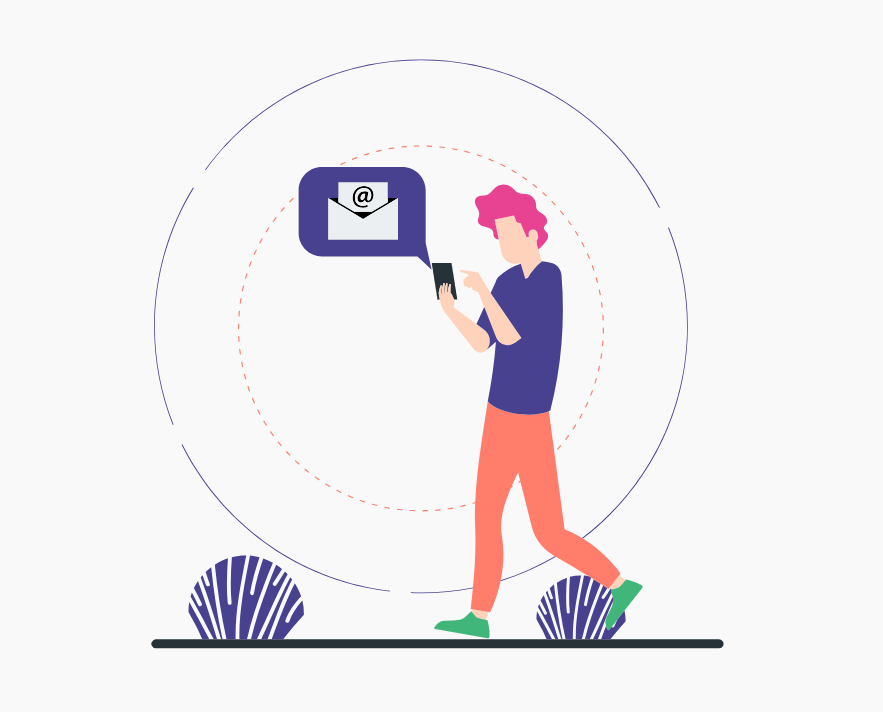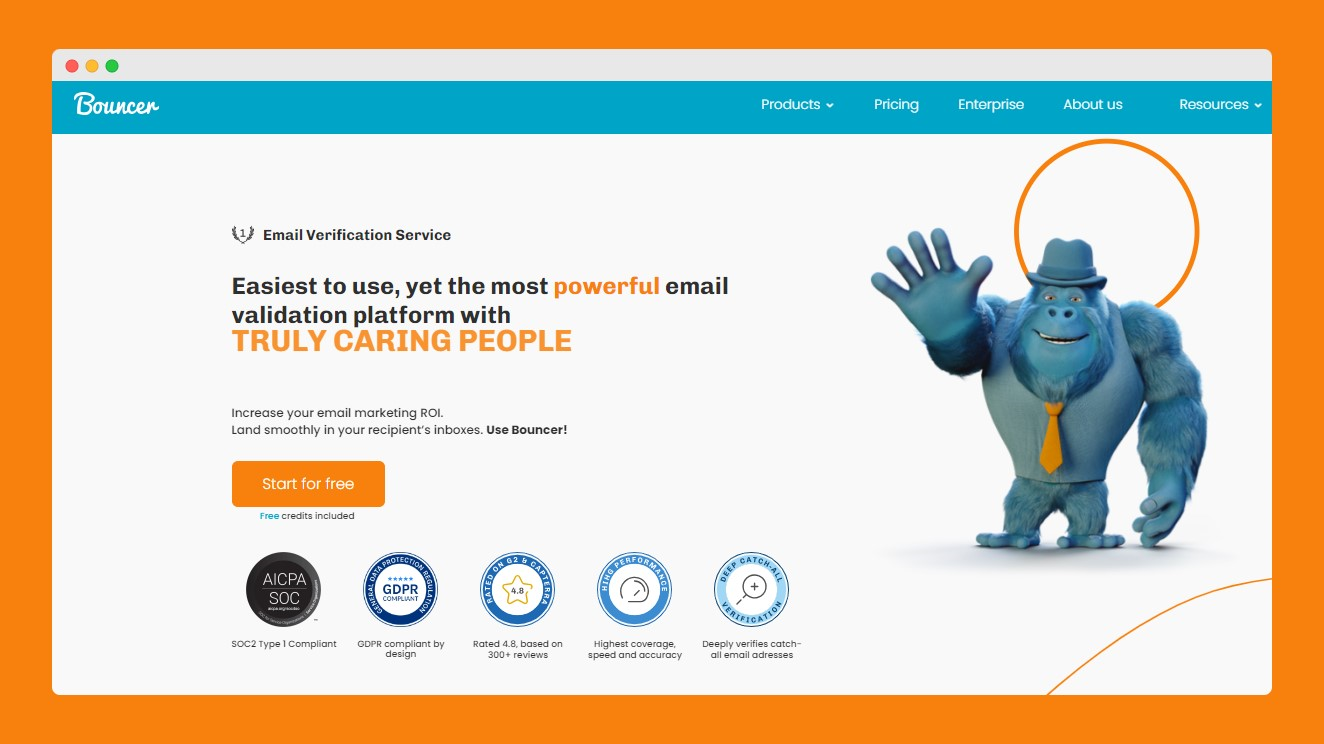When someone uses a disposable email, it sends a clear message: I will never check this inbox in my life again.
And it leads to many missed opportunities for both sides: businesses can’t share their perfectly crafted messages, and users miss out on offers they might love.
But there’s hope!
Let’s explore how to keep your communication lines clear and your audience engaged. We will help you catch and block disposable addresses.
What are disposable emails?
A disposable email address lets you receive emails without using your real email address. The temporary address works for a short time, and then users forget about it.
People use disposable email address services when they don’t want to share their real email. It may be handy for signing up for things online without getting spam emails later.
They help keep your main email inbox cleaner and more secure. But not only that.

Source: Designs.ai
Why do people use them?
There are other reasons why people use temporary email addresses.
For signing up for free trials
When people want to try out a new service or product that offers a trial period without payment, they might hesitate to give your real email.
That’s because signing up often leads to a flood of unwanted emails or spam. Here’s where disposable email services come into play.
They use a temporary email from disposable email address services to sign up for these free trials without the worry of clogging your main inbox with spam.
To avoid spam
One of the main reasons people use fake email addresses or throwaway email accounts is to avoid spam.
Once signing up for various online services, newsletters, or promotions, your inbox can quickly get overwhelmed by unwanted emails.
And thanks to using a fake email address, you won’t have to worry about spam overloading your primary email address.
Throwaway email addresses act as a shield, catching all the junk mail and keeping your real inbox clean and organized.
It’s a strategy that lets people keep their privacy and ensure that their main email account remains free from clutter and potential security risks associated with spam emails.
👉 Related topics: Learn how to remove spam traps and how to check email addresses for spam.
To protect their privacy
Instead of giving out their real address online, they get new, random email addresses from email providers.
The addresses are perfectly valid and remain active just long enough for people to use them for their needs, so their real address stays private and safe, and also spam-free.
To test out a tool or service
When they want to test out a tool or service, like a new WordPress plugin for your site, they often need to fill out registration forms or contact forms. It might require an email address to receive an API key, API token, access to the tool, or anything else.
Instead of using their real email, people sometimes use a temporary one for these sign-ups. This is handy because users might not need that email once they’re done testing.
It won’t be longer active, so people don’t have to worry about cleaning it up.
To avoid unwanted emails
Some people create fake accounts using temporary mail services so as not to get junk spam emails. The services let you receive mail for a short period before the address becomes inactive.
However, some websites and tools (like Bouncer) can easily identify disposable email addresses. Some of them may not allow you to use the temporary addresses for creating fake accounts.
Businesses want to prevent spam and ensure only real users are signing up.
Why are disposable emails bad for your business?
There are a few benefits to using disposable emails as an individual user. However, if you run a business and want to be successful and profitable, disposable emails can be a huge headache. Here are some of the reasons why you should avoid adding them to your email lists.
Lower email engagement
Once people sign up with these types of emails, they’re often not planning to interact with your content or offers. They might just test your service without any intention to engage further.
So your emails are going to inboxes that no one checks or that will soon be deactivated. And as a result, your engagement rates—like open and click-through rates—can drop, and email deliverability suffers as well.
Fake or invalid contact information
Customers use a disposable address to sign up for your services or newsletters to provide businesses with contact details that will soon cease to exist.
Any future communications or marketing efforts aimed at these addresses will be wasted, as the messages will not reach an engaged audience.
Using disposable email addresses suggests that the user is looking for a one-time interaction without the intention of forming a lasting connection with your brand.
Higher bounce rates
A bounce happens when an email can’t reach someone’s inbox. Since disposable addresses stop working after a while, emails you send later just bounce back.
High bounce rates can make it look like you’re not sending good emails, and your business will suffer: worse sender reputation, potential loss of advertising revenue, and challenges in customer retention – these are just a few examples.
It’s like throwing a ball that keeps hitting a wall and never gets caught. You want your emails to reach people who really read them, not just disappear.
📚 Read: What is an average email bounce rate and how to improve it.
Higher chances of emails being flagged as spam
Throwaway email accounts and fake emails don’t have the same trust level as personal email addresses.
People often view emails coming to their temporary accounts as less important or unwanted. So, they might mark them as spam more quickly than they would with messages to their personal email.
As lots of users flag your emails as spam, email providers may see your messages as unwanted by default. Even your well-intentioned emails to real, personal addresses could get stuck in spam folders, unseen and unread.
Wasted email marketing resources
When businesses send emails to a temporary email address instead of an actual email address, they end up wasting their marketing budget.
Here’s why: emails meant for real engagement, updates, or promotions go to a random email address that might not even be checked after a short while.
All the effort, time, and money put into crafting those emails just go to waste.
Instead of reaching someone interested in your service or product, your message lands in a temporary inbox that was never meant for long-term communication.
Problems with segmentation
Segmentation is organizing contacts based on interests, behaviors, or demographics to send more targeted and relevant emails.
If subscribers use different addresses that they don’t regularly check, it becomes hard to understand their real preferences or how they interact with your emails.
So, you end up sending emails that don’t resonate with your audience.
It’s like trying to score a goal without knowing where the goalpost is.
You need their main emails to make sure your cool emails land right into their inbox, not get lost in the internet somewhere.
How to block disposable email addresses?
Not all is lost. You can block disposable email addresses and help your business. Check out our tips:
Use a real-time email verification API
Bouncer’s Email Verification API helps your business by checking emails in real time.
It can detect a disposable email from a temporary email service, so you can block disposable email addresses as soon as someone tries to use them on your site.
It stops temporary email addresses from getting through.
You keep your email list clean and full of real, active users. It’s a simple way to make sure you only deal with genuine emails and avoid the problems temporary emails can cause.

Clean and verify your email lists
Bouncer is like a super helper for your email list. It checks emails to make sure they’re good to go. You can spot risky email addresses and keep them away from your main list.
With Bouncer, you enable email validation, so only the best, primary email addresses stay.
But not only. Here are Bouncer’s superpowers in a nutshell:
- quick and easy email verification
- real-time checks for primary email addresses
- detects risky email addresses
- integrates with your systems smoothly
- offers a toxicity check to avoid harmful contacts
- provides a deliverability kit to boost email success
- supports with fast and premium help
- simple to use interface
- ensures security with SOC2 and GDPR compliance

Be transparent
Tell your users straight up how you keep their info safe and what your emails will be about.
People are less likely to use disposable email addresses if they trust you. They may feel better using their real emails, knowing exactly what kind of emails they’ll get from you.
Also, if they look forward to getting info from you, why would they use a mailbox that they don’t even check?
Send the content you promised to your subscribers
Stick to sending exactly what you told your subscribers they would get from you.
Make people feel they can rely on you for quality content. Then, they might be much less inclined to hide behind temporary email services.
They may prefer their main email so no to miss any of your emails. You send great content, they stay loyal with their real emails, and everyone’s happy.
Conclusion
But we’ve got your back with tips and tricks to keep your email list clean and full of real, eager eyes.
From using smart tools like Bouncer to clear out the fakes, to making sure you’re as clear as glass about what you send, we’ve laid out a path to email bliss.
Stick with us, and let’s make sure your messages land where they matter. Sign up to Bouncer for free and check your first 1,000 email addresses for free.


